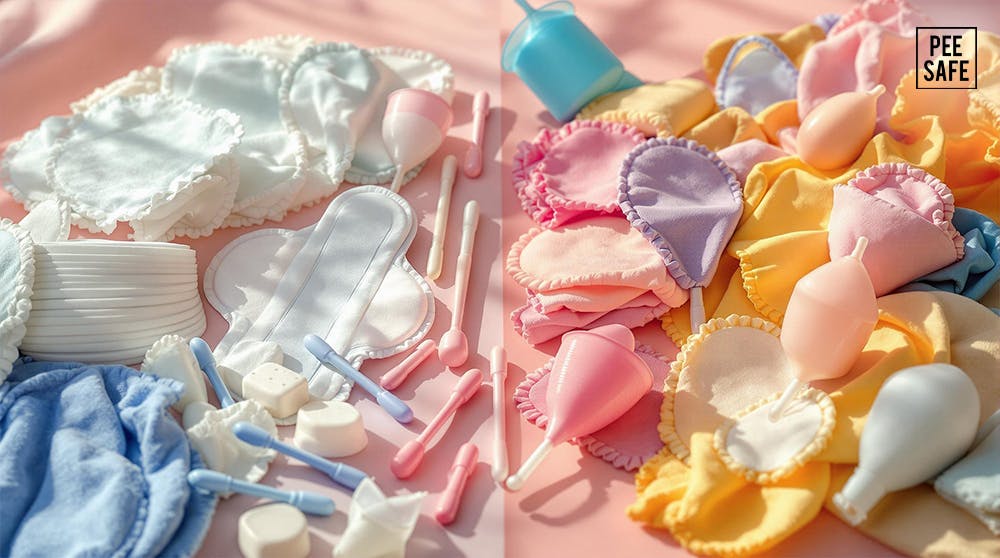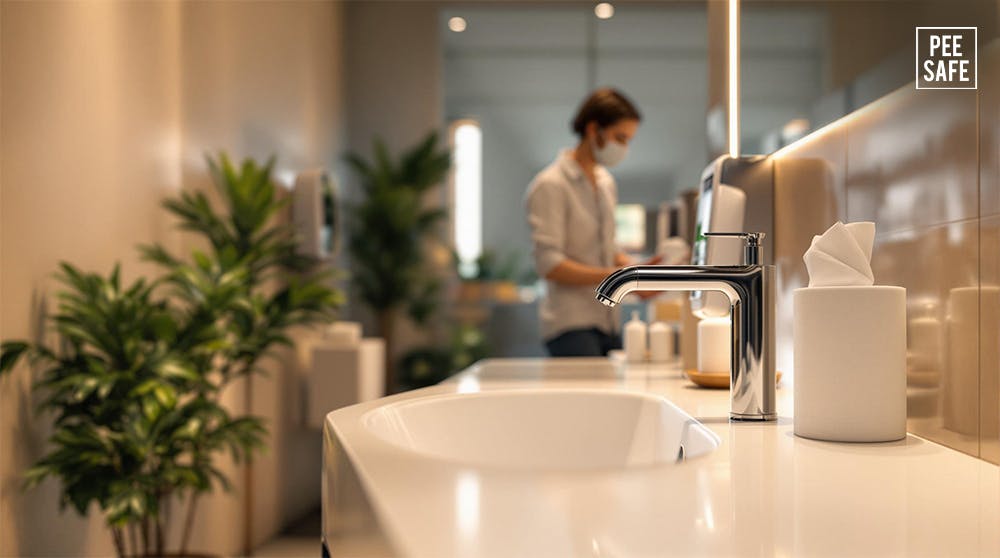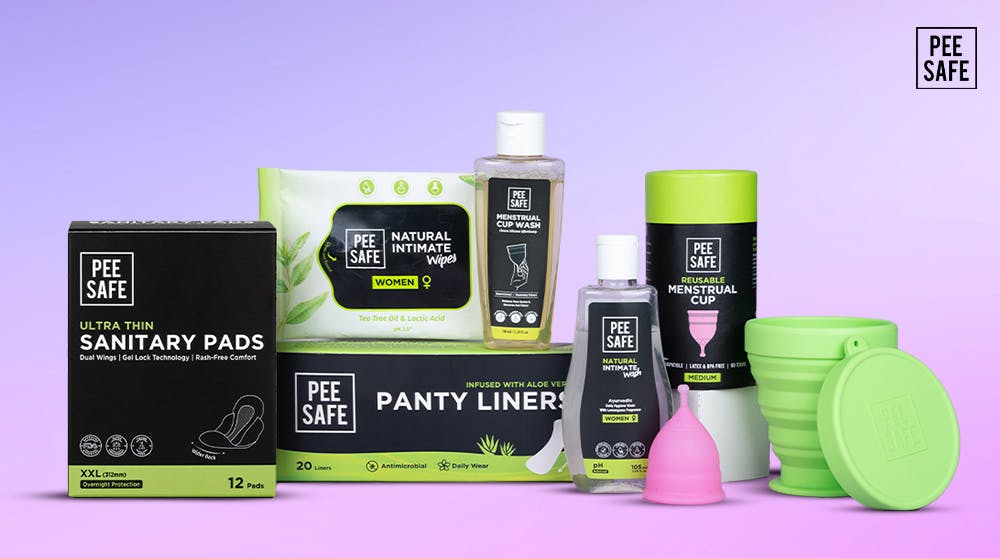Should you choose disposable or reusable menstrual products? Here's a quick breakdown to help you decide:
- Disposable Products: Convenient, widely available, and single-use. However, they contribute significantly to waste and may contain chemicals that irritate the skin.
- Reusable Products: Eco-friendly, cost-effective over time, and made from natural materials. They require washing and a higher initial investment but last for years.
Quick Comparison
| Feature | Disposable Products | Reusable Products |
|---|---|---|
| Cost | Low upfront, recurring costs | Higher upfront, long-term savings |
| Lifespan | Single-use | 4-10 years (varies by product) |
| Waste | High | Minimal |
| Convenience | Easy to use and discard | Requires washing and maintenance |
| Health | May contain chemicals | Often made from natural materials |
| Travel-Friendly | Very convenient | Requires planning |
Reusable options like menstrual cups, period underwear, and washable pads are better for the planet and your wallet, while disposables are ideal for quick and easy use. Many people mix both to suit their needs. Keep reading to find out which is right for you.
Sustainable Period Products: Gynecologist Explains Safe Alternative Menstrual Options
Factors to Consider
When choosing between disposable and reusable products, it's important to weigh factors like their impact on the environment, costs, and ease of use.
Impact on the Environment
Disposable products contribute heavily to landfill waste due to their plastic components and slow decomposition. On the other hand, reusable products significantly cut down on waste because of their long lifespan. For instance, a menstrual cup can last up to 10 years, drastically reducing the amount of waste generated [2].
"Reusable menstrual products, particularly menstrual cups, have a significantly lower environmental impact compared to disposable products during both production and disposal phases." - The Lifecycle Initiative [2]
Cost Analysis
Although reusable products come with a higher upfront cost, they save you money over time. Here's a simple cost breakdown:
| Product Type | Initial Cost | Lifespan | Cost Over Time |
|---|---|---|---|
| Menstrual Cup | Higher upfront expense | Up to 10 years | Long-term savings |
| Disposable Products | Lower upfront cost | Single-use | Recurring monthly cost |
Ease of Use and Hygiene
Convenience depends on your routine and lifestyle. Disposable products are simple to use and discard, but reusable options can be just as practical with a little planning. Research shows that menstrual cups often cause less irritation and leakage compared to disposables [3].
Your choice may also depend on access to washing facilities and how comfortable you are with maintaining reusable products. Many users find that once they adjust to reusable options, they can be just as - if not more - comfortable than disposables [1][3].
These factors provide a foundation for comparing the pros and cons of each option in greater detail.
Comparing Disposable and Reusable Menstrual Products
Advantages and Disadvantages of Disposable Products
Disposable menstrual products are a go-to choice for many because they’re easy to find and simple to use. Their biggest perk? Convenience. You can pick them up at almost any store and toss them after one use, making them especially handy when traveling or in a pinch.
But there’s a downside. These products are a major contributor to landfill waste. Plus, some contain chemical additives and dyes that could irritate the skin or even disrupt hormones for some users [2].
"The average menstruator uses 5,000 to 15,000 disposable pads in their lifetime, which often end up in landfills or pollute oceans" [4]
So, while disposable options are convenient, reusable products offer an alternative that’s better for the planet.
Advantages and Disadvantages of Reusable Products
Reusable menstrual products, like cloth pads and period underwear, are becoming more popular among those looking for eco-friendly options. They provide solid leak protection and can last for years - typically 4-5 years with proper care [1].
On the flip side, they do require regular washing and access to water and soap, which can take some getting used to. But many users find that the long-term benefits, like saving money and reducing waste, make the effort worthwhile.
Comparison Chart
| Feature | Disposable Products | Reusable Products |
|---|---|---|
| Initial Cost | Lower (₹100-300/pack) | Higher (₹400-1000/item) |
| Lifespan | Single use | 4-5 years (pads) |
| Environmental Impact | High | Low - minimal waste |
| Maintenance | None required | Regular washing needed |
| Availability | Widely available | Limited but growing |
| Health Considerations | May contain chemicals | Often made from natural materials [3] |
| Travel Friendly | Very convenient | Requires planning |
This table lays out the main differences to help you decide which type of product aligns with your needs and priorities.
sbb-itb-3009f4a
Types of Reusable Products
Reusable menstrual products offer a practical and eco-conscious alternative to disposables. With plenty of options available, there's something to suit every preference and need.
Menstrual Cups
Menstrual cups are a long-lasting option made from medical-grade silicone. They’re designed to be worn for up to 12 hours, making them a convenient choice for busy days or physical activities. Available in multiple sizes to match different body types and flow levels, these cups are both cost-efficient and environmentally friendly [1].
Period Underwear
Period underwear combines comfort with functionality. These specially crafted undergarments feature absorbent, leak-proof layers, offering protection without needing additional products. Perfect for light to medium flow, overnight use, or as a backup, they’re a reliable and comfortable option [1].
Reusable Pads
Reusable pads are made from materials like bamboo and cotton, which enhance both absorption and comfort. Unlike disposable pads that can take centuries to break down, these pads are a more sustainable choice [1].
| Feature | Advantages |
|---|---|
| Materials | Eco-friendly fabrics like bamboo and cotton ensure comfort and absorption |
| Durability | Can last 4-5 years, cutting down on waste and expenses |
While reusable pads may feel bulkier than disposables, many users appreciate the long-term savings and reduced environmental impact.
With these choices in mind, you can explore which reusable product fits best with your lifestyle and preferences.
Choosing the Right Product
Picking the right menstrual product depends on your personal needs, daily routine, and preferences. You don't have to stick to just one option - many people mix disposable and reusable products to fit different situations.
Budget and Environmental Considerations
Reusable options might cost more upfront, but they save money over time and create far less waste compared to disposables. Among these, the menstrual cup has the lowest environmental footprint [2].
Matching Products to Your Lifestyle
Your daily activities can help you decide which product works best:
| Activity Type | Recommended Product | Why It Works |
|---|---|---|
| Office Work | Period Underwear/Reusable Pads | Discreet and long-lasting |
| Sports or Swimming | Menstrual Cup | Secure and lasts up to 12 hours |
| Overnight | Period Underwear + Reusable Pad | Comfortable and reliable |
| Travel | A Mix of Products | Convenient and adaptable |
Tips for Starting and Maintenance
Ease into reusable products by starting with something simple, like period underwear for lighter days. Keep hygiene in mind by cleaning and storing products properly. If washing facilities are limited, period underwear is a great option since it can be cleaned with regular laundry [2].
Storage and Travel
Think about storage and portability. Reusable pads need space at home and on the go, while compact choices like menstrual cups or travel-friendly pads with pouches are great for frequent travelers.
Your choice doesn't have to be final - it's okay to switch things up as your needs evolve. The goal is to find products that work with your lifestyle, values, and comfort while ensuring hygiene and convenience.
Conclusion
Choosing the right menstrual products involves weighing personal needs, lifestyle, and environmental impact. Reusable options, while requiring a higher initial investment, can save money over time. On the other hand, disposable products are convenient but contribute to waste.
Reusable products, like menstrual cups or period underwear, require proper care to maintain their effectiveness and reduce waste [2]. Many people find that using a mix of products works best. For instance, pairing reusable pads with a menstrual cup or using period underwear for lighter days can provide flexibility and meet different needs.
This mix-and-match approach allows you to adapt based on activities and comfort. Whether you're at home, traveling, or playing sports, the right combination ensures you stay comfortable and confident while maintaining consistent care.
Ultimately, the best solution is one that fits your routine, keeps you comfortable, and aligns with your priorities - whether that's reducing waste, saving money, or ensuring convenience. By balancing these factors, you can make choices that suit both your needs and the environment.
FAQs
Are reusable period products better?
Reusable menstrual products have a much smaller environmental footprint compared to disposables, which can take centuries to break down. For example, menstrual cups can last up to 10 years, significantly reducing waste over time [1][2].
In terms of cost, reusable options often save money in the long run, even though they require a higher initial investment [1]. Some users also report improved comfort and reduced skin irritation with certain reusable products [3].
That said, convenience can vary. Disposables are simple to throw away, while reusable products require cleaning and maintenance. The best choice depends on finding a balance between sustainability, cost, comfort, and ease of use.
Many people opt for a mix of both - using reusable products at home and disposables for travel or emergencies. This approach offers flexibility while supporting eco-friendly habits.
Ultimately, your decision should reflect what works best for your lifestyle and priorities.




























